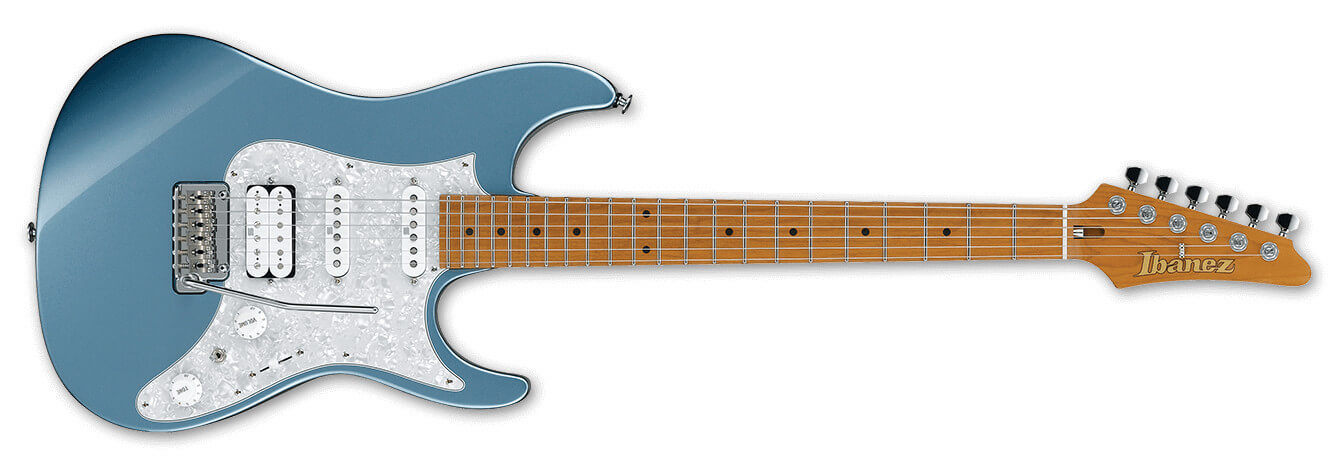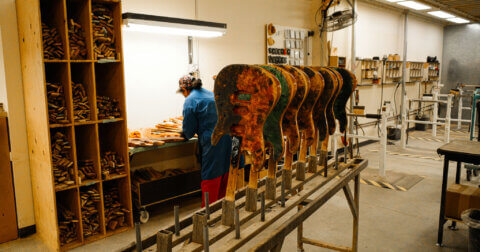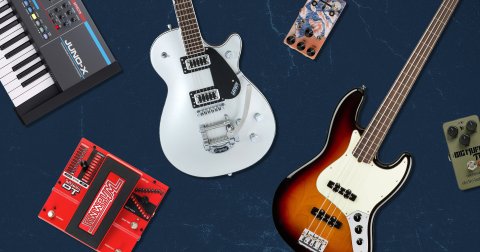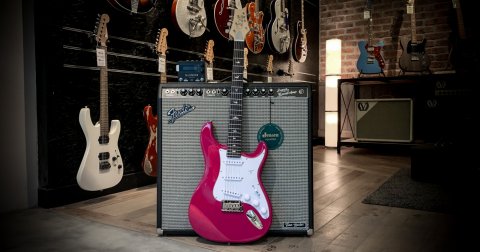It’s 1978. A young Edward Van Halen takes to the stage with his Stratocaster sporting a black and white, randomly striped paint job. Nicknamed the “Frankenstrat”, this guitar was – like its name suggests – an amalgamation of guitar parts thrown together, finished with nothing more than some tape and bicycle spray paint. The guitar would see many more modifications and upgrades through the years and of course, would shake the very foundations of rock music.
The Guitars That Defined a Decade
Eddie Van Halen’s put-together Frankenstrat is widely recognised as the first Super Strat – borne out of his need for a faster, more aggressive and playable instrument that Fender and Gibson were able to create at the time.
With Van Halen’s records were selling like hotcakes, guitar companies like Jackson, Ibanez and even Fender, started to develop their own versions of the Super Strat. Players like Steve Vai, Joe Satriani, Paul Gilbert and many others developed models that have become mainstays in Ibanez’s lineup.
The 80s saw a shift towards hard-edged rock and metal, and with the popularity of shred guitar at an all-time high, the Super Strat took centre stage. Almost all the big hitters played them in the 80s, but knowing just what makes a Super Strat a Super Strat is understanding where to look. Here are some parts you can look out for…
The Neck
The traditional c-shaped and v-shaped necks were a handful for players who favoured speed over everything else. The solution? A flatter, thinner neck. To take things even further, the fretboards became wider and flatter, a big change from the rounder fretboard radius common on Stratocasters and Les Pauls.
Ibanez pushed the boundaries of thin necks with their Wizard necks. These were some of the thinnest neck profiles around, relying on a new truss rod to reinforce the structural integrity of such thin pieces of wood.
Higher fret access also became an important feature of Super Strats. Players were reaching higher notes – 24 fret guitars became the norm as compared to the 21 frets the Stratocasters had at that time. Deeper cutaways allowed for higher fret access, and the use of a “neck through construction” greatly improved this, reducing the heel even more.
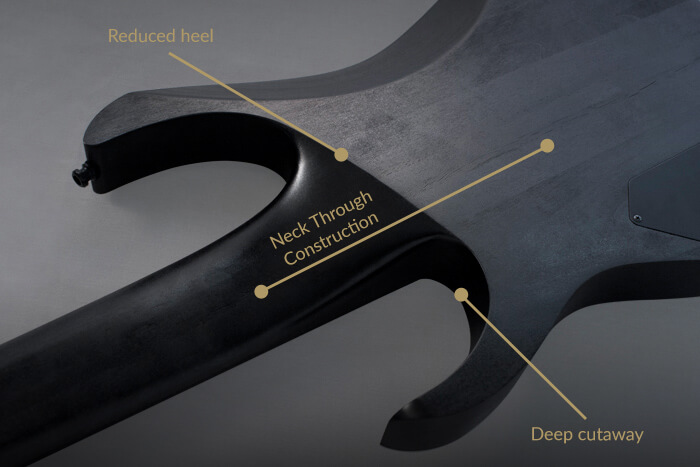
The neck-through construction of an Ibanez M8M Meshuggah Signature model.
The Body
Basswood became a popular wood used for Super Strats, which makers found was light, strong and resonant. Alder woods were the traditional choices for Stratocasters and they were still used, but weren’t as common.
The Looks
It is not the 80s without the hair, glamour and debauchery. The guitars weren’t just a tool, they were an outlet for individual expression and a lifestyle accessory. Loud, electric colours, tiger stripes and ostentatious prints defined the Super Strats of the era.
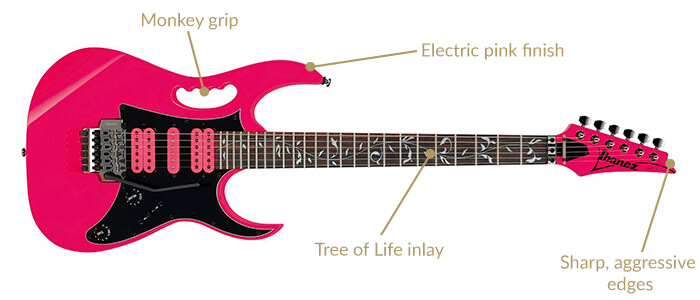
Ibanez Steve Vai JEM-JR in pink..
Pickups
The hotter the better. There was no question about what players wanted in the 80s. Tube amps of the day could only distort so much, and an increasing desire for more aggressive, heavier sounds meant that the output of pickups could only go one way – up. For a higher output pickup, pickup makers could increase the number of wounds or use a stronger magnet. One of the first modifications players would make was to throw out the single coil pickup in the bridge for a higher output humbucker – Eddie Van Halen did just that with his Frankenstrat.
Larry DiMarzio would take things even further with the famous Super Distortion pickup in 1972. Using a ceramic magnet instead of the usual alnico magnets, combined with a greater number of coil winds, the Super Distortion became a smash hit with guitarists who needed to push their amp into overdrive sooner. The Super Distortion was widely regarded as the first mass-produced replacement pickup of the era, which made it the obvious choice for players who were modifying their guitars, or building their own Super Strats.
The Whammy Bar
You’d be hard pressed to find a Super Strat in the 80s without a whammy bar. Whammy bars have been around since Leo Fender’s innovative tremolo system on the Stratocasters. But like everything else, it was always about wanting more.
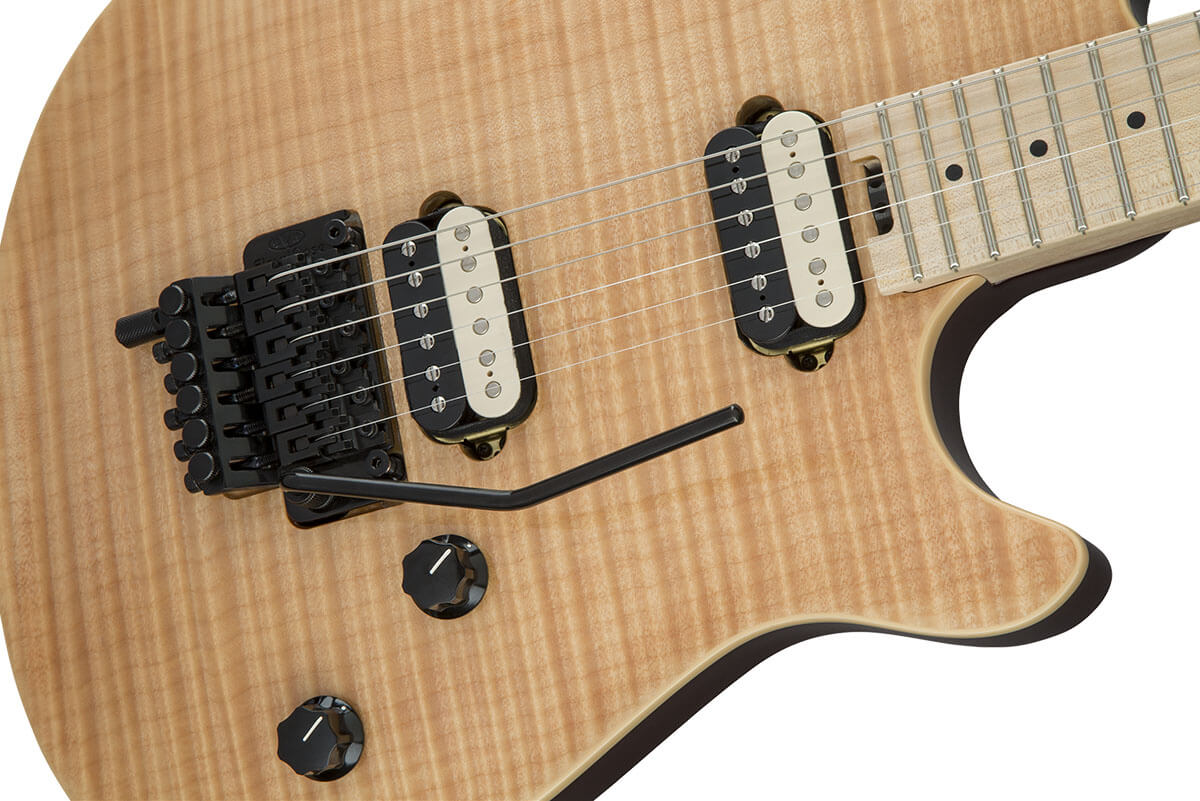
Floyd Rose tremolo system on an EVH Wolfgang Special.
The Floyd Rose tremolo bridge addresses the issues of the Stratocaster’s stock tremolo. It features a double locking mechanism, with a locking nut at the headstock that prevents the strings from detuning when used aggressively. The trademark ‘divebomb’ of the German-made tremolo system became a familiar sound in the 80s. Just listen to “Eruption” by Van Halen or any Steve Vai record – they are littered with examples.
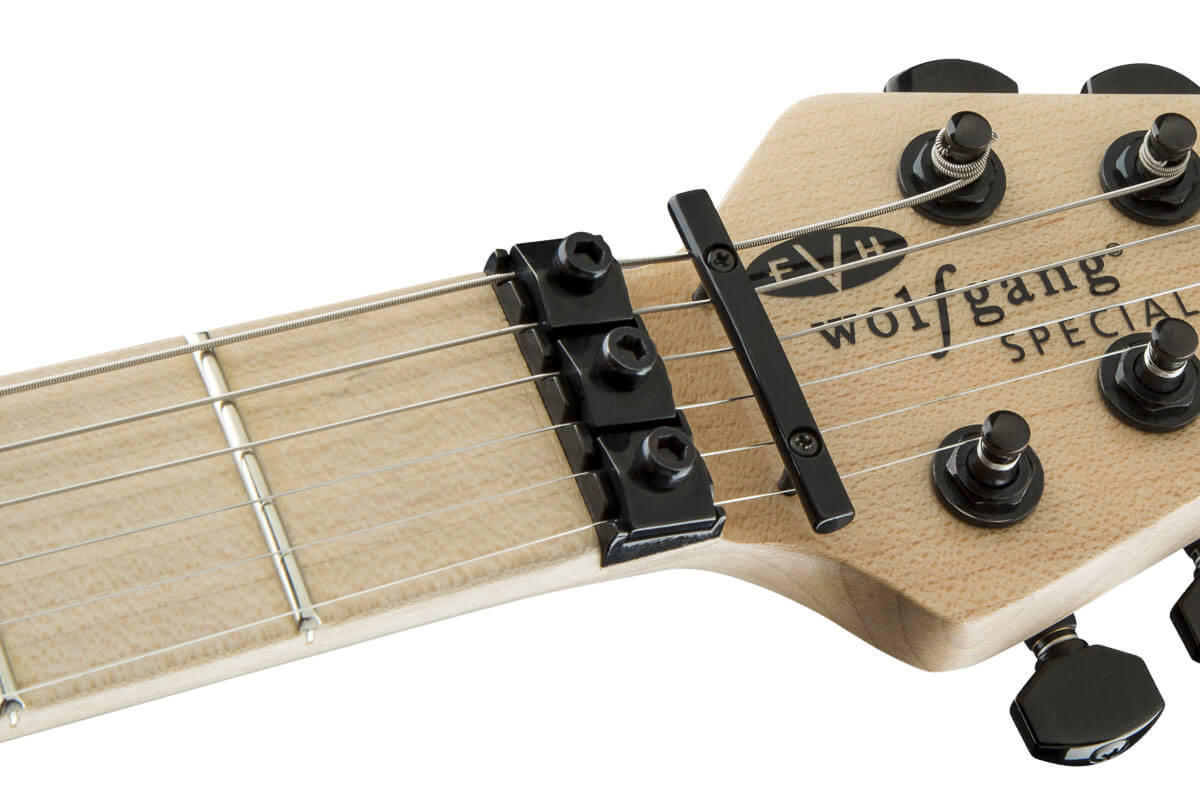
The locking nut prevents tuning issues that come with aggressive divebombing..
The Next Generation of Super Strats
Super Strats had their heyday in the 80s and their popularity started tapering off as the 90s progressed. The rise of grunge saw heavier riffs replaced the flashier guitar solos but the shift in music tastes and culture didn’t spell the end of the road for Super Strats. Brands like Ibanez moved with the times, innovating and developing guitars that suited the needs of their players.
The usual features of the Super Strat may have changed, but the ethos has always remained the same – it’s about pushing the boundaries of what a guitar can be. With players demanding more than ever before, the next generation of Super Strats bring a whole new string of improvements to the game.
The Ibanez AZ Series
Launched at Winter Namm 2018, the Ibanez AZ series is a modern, ‘boutique’ style take on the Super Strat. Ibanez developed the guitar with professional artists all over the world, exploring different features and options until they covered everything, from A to Z, hence its name. Available in Prestige and Premium variations and a wealth of finishing options, the AZ Series was designed to cut across genres and appeal to a wide range of players.
Stainless steel frets, the highly versatile Seymour Duncan Hyperion pickups, a completely new designed neck joint that offers superb higher fret access, all come as standard with the AZ Series.

The brand new Ibanez AZ Series is available at Swee Lee. Check them out online here or head down to the Swee Lee flagship store at The Star Vista to experience the Super Strats of today.
[the_ad id=”2442″][the_ad id=”2444″]

